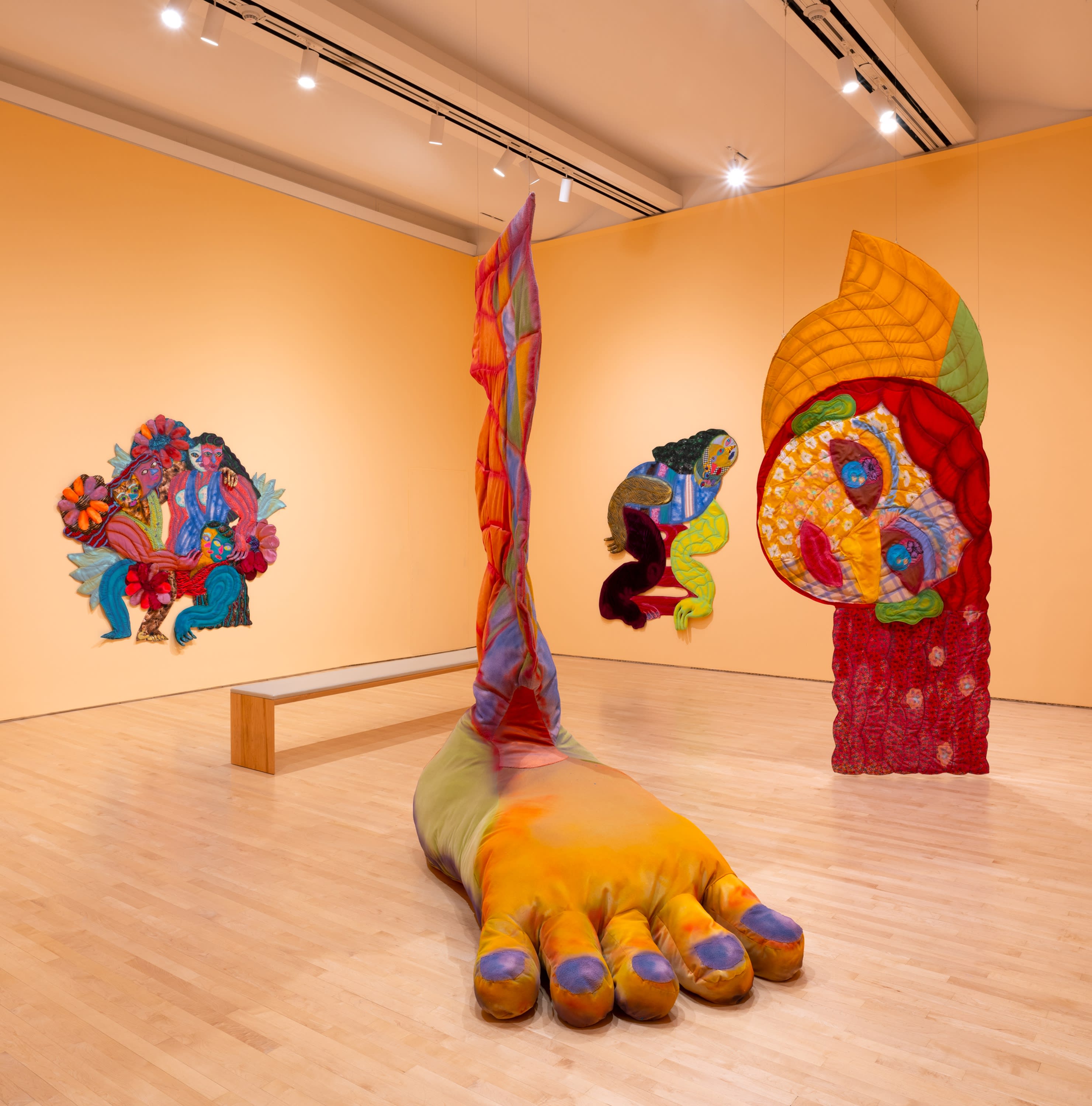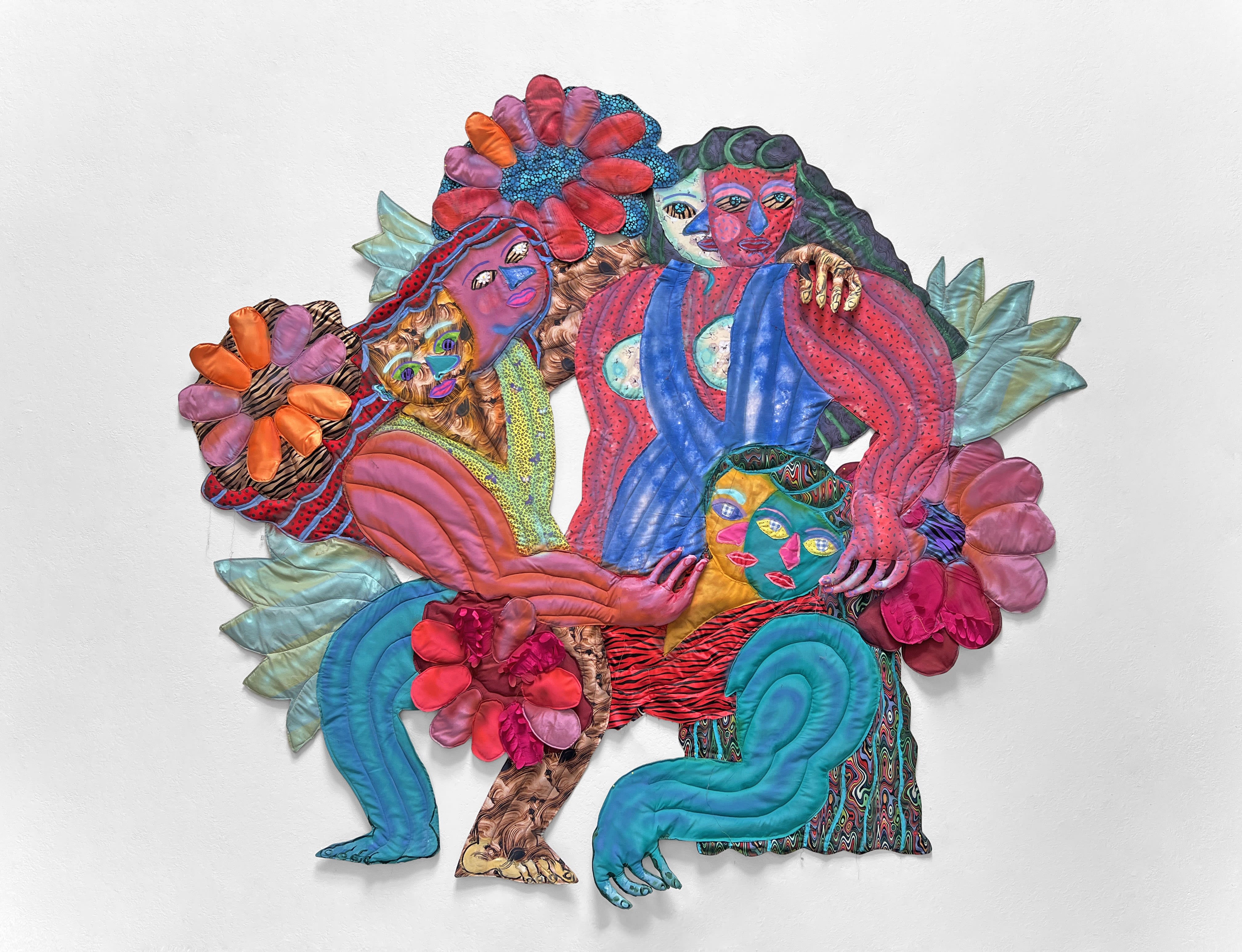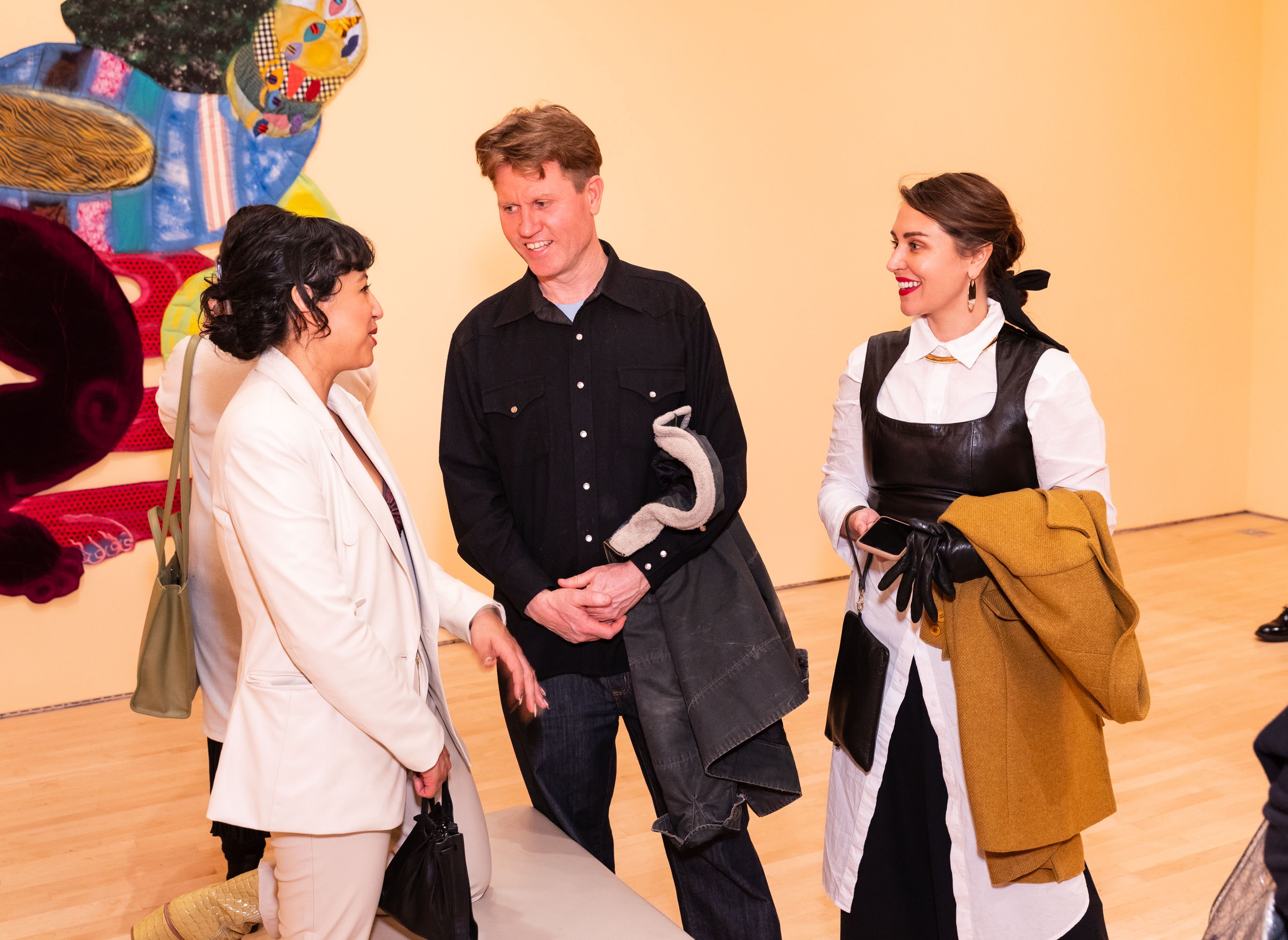
San Francisco’s arts community has weathered a pandemic, found solidarity amid rising political tensions and racial reckonings and continued to combat the steep cost of living that makes it difficult for working artists to survive in the Bay Area.
In what feels like a direct response to the past three years, the 2022 Society for the Encouragement of Contemporary Art Award exhibition at SFMOMA offers a celebration and recalibration of the local scene. The biennial exhibition, dating back to the 1960s, showcases, on a global stage, how five local artists are responding to the current climate and cutting a path forward.
 INSTALLATION VIEW OF 2022 SECA AWARD EXHIBITION, FEATURING MARIA A. GUZMÁN CAPRON'S MUCHO MÁS, 2022.FABRIC, THREAD, BATTING, STUFFING, WIRE, SPRAY PAINT AND ACRYLIC PAINT. HEAD: 132 X 60 IN / 335.3 X 152.4 CM. FOOT: 120 X 72 X 44 IN / 304.8 X 182.9 X 111.8 CM
INSTALLATION VIEW OF 2022 SECA AWARD EXHIBITION, FEATURING MARIA A. GUZMÁN CAPRON'S MUCHO MÁS, 2022.FABRIC, THREAD, BATTING, STUFFING, WIRE, SPRAY PAINT AND ACRYLIC PAINT. HEAD: 132 X 60 IN / 335.3 X 152.4 CM. FOOT: 120 X 72 X 44 IN / 304.8 X 182.9 X 111.8 CM
Binta Ayofemi, Maria A. Guzmán Capron, Cathy Lu, Marcel Pardo Ariza and Gregory Rick were selected by Andrea Nitsche-Krupp, SFMOMA’s assistant curator of media arts, and Jovanna Venegas, SFMOMA’s assistant curator of contemporary art, from over 200 applications throughout the nine Bay Area counties. In the community-oriented spirit of the exhibition, the entire second floor of SFMOMA is free to visitors throughout the duration of the exhibition, a first-of-its-kind initiative for the museum.
So what does the 2022 iteration of the SECA Award tell us about this particular moment in the Bay Area arts? One: It’s diverse. Two: It sticks close to its grand traditions of craft and experimental art, from textile and painting to photography and immersive installation. Three: It’s determined to confront the present and be hopeful about the future.
“All these artists are looking at the world we live in and saying: Here’s another way you can think about this,” said Nitsche-Krupp.

MARIA A. GUZMÁN CAPRON, Eros, 2022. Fabric, thread, batting, stuffing, spray paint and acrylic paint. 81 x 87 x 1 1/2 in. COURTESY OF THE ARTIST AND SHULAMIT NAZARIAN, LOS ANGELES.
Possibility is at the fore of Ayofemi’s work, which spans sculpture, video and installation, applying the musical concept of resampling and pitch-shifting to our everyday, physical surroundings. Her gallery, which welcomes visitors to the exhibition, includes a 22-minute, three-channel video, “Notes on Black Abstraction.” The video pays homage to legendary Black and indigenous artists, is set to a score of Alice Coltrane’s “Journey in Satchidananda,” and includes several wooden benches carved from eucalyptus and redwood trees damaged in recent California wildfires, raising questions of native and nonnative belonging.
Ayofemi’s work continues through the exit of the exhibition, where the walls have been painted to evoke the atmosphere of dusk and dawn and gold-leaf lettering reads “continuum.” This space will host performances throughout the duration of the exhibition and more text will be added.
Immersion and invitation are also at play in Guzmán Capron’s installation "Respira Hondo,” prominently featuring “Mucho Mas,” a large-scale fabric sculpture of a giantess’ head and foot, peering and stepping into the gallery space, as if breaching a barrier between worlds. The pastel-cantaloupe shade of the walls blends with the warm tones of the floor to further the immersive atmosphere. Three fabric wall sculptures “Eros,” “Danza” and “Luna” offer figurative embodiments of love, joy and the passage of time, signaling Guzmán Capron’s personal muses and expanding on her gallery’s dreamy quality.

Traditional craft and sculptural installation intersect again in Lu’s tentacular “Resurgence,” resembling a spider web adorned with large ceramic beads. Spanning an entire gallery space, the sculpture is inspired by the Chinese mythical goddess, Nüwa, who created humans from clay, examining “artists and our role as creators,” Lu said.
This began weighing heavily on Lu’s mind in 2020, when she and many of her students at the California College of the Arts were questioning the point of being an artist while confronted by the pandemic and the Black Lives Matter movement. “I started to think of us as artists being able to create the world that we want to see.”
While Rick offers the most formally traditional entry to the SECA Award exhibition, his large-scale historical paintings introduce the potential for change into what often feels like an oppressively fixed narrative.
The current Turnesoul awardee defines his practice as an exploration of “contemporary moments in history, such as the rise of white supremacist terrorist groups in relation to the January 6 raid on the Capitol,” while relating these events “back to my own interest in how democracies slide into dictatorships.” By warping scale and mixing stylistic genres, Rick presents scenes of recent political torpor through a personal lens, insisting on their reclamation.
Personal politics and the exhibition’s sense of community extend beyond the arts to activism in Pardo Ariza’s multimedia installation “I Am Very Lucky, Very Lucky to Be Trans,” consisting of photographic portraits of over 30 transgender leaders and activists throughout the Bay Area and beyond, central among them Honey Mahogany, chair of the San Francisco Democratic Party and co-founder of the Transgender District.
“We’re always grieving anti-trans violence,” Pardo Ariza said, “and I wanted to use this opportunity to celebrate folks who are leaders here today and deserve this kind of recognition.”
An audio component features interviews with the individuals represented, offering visitors an opportunity to slow down and get to know people in a more intimate way.

